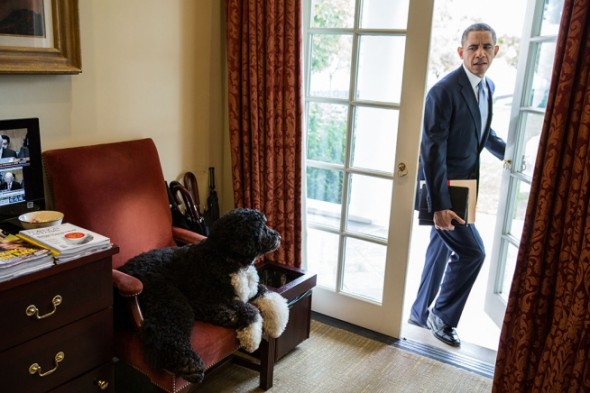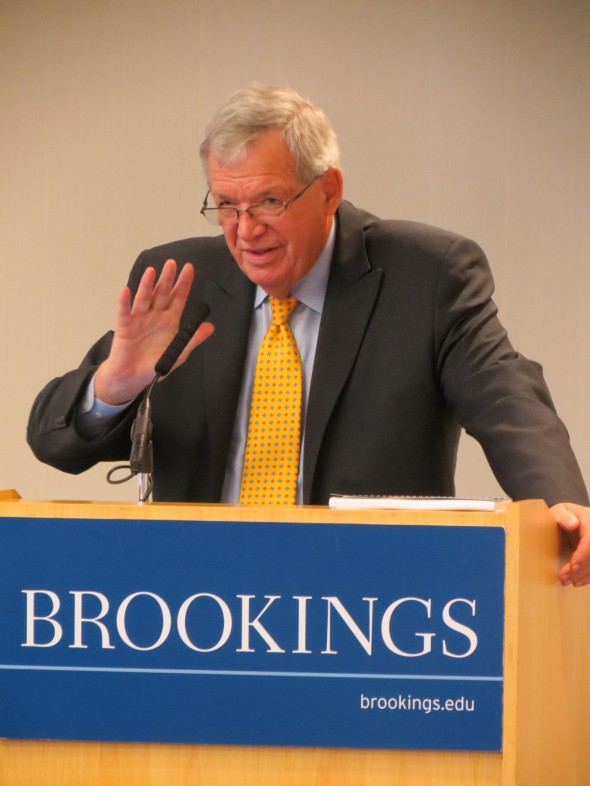Our sincere best wishes to you and yours this holiday season. Please click here to enjoy a holiday greeting from your friends at Brookings Executive Education.
Tags
Trending

Our sincere best wishes to you and yours this holiday season. Please click here to enjoy a holiday greeting from your friends at Brookings Executive Education.

Tiffany Win, External Relations Coordinator of Admissions and Registrar for Brookings Executive Education, recently attended the BEE course, Inside the Executive Branch.
This insider’s guide to the Executive Branch focuses on the many dimensions of executive power—from the White House to independent agencies—to help position an organization to participate in the policy conversations that matter. Policy making on Capitol Hill is only one part of the equation. Congress regularly enacts vague legislation, which leaves addressing policy details to the discretion of Executive Branch agencies.
Rules, regulations, Executive Orders, and a variety of other mechanisms have a significant impact on an organization’s bottom line, be it public or private. Another key element of the policy process is the agenda set by the White House, whether formally through the budget or informally via the bully pulpit.

Tiffany Win
Here’s what Tiffany had to say about Inside the Executive Branch:
Who was your favorite speaker?
Sally Katzen.
Sally Katzen is the Former Deputy Director for Management within the Office of Management and Budget and the former Administrator for the Office of Information and Regulatory Affairs, Executive Office of the President, the White House. Katzen is currently a Senior Advisor for the Podesta Group. Katzen spoke on “Deciding US Regulatory Policy: The Office of Information and Regulatory Affairs in the Executive Office of the President (OIRA).”
Given my non-public administration background Sally Katzen made the material accessible. She understood that with an audience like this there would be a variety of backgrounds and she took that into consideration as she explained regulatory affairs. Katzen’s examples were interesting and nuanced; she gave full consideration to her audience of federal agency and private sector employees. The examples were perfect for demonstrating strategic thinking and problem solving; I left understanding the rationale behind regulatory policy.
What was the element of greatest value to you in this course?
The speaker bureau-style presentation and how the speakers refer to each other’s presentations. Learning from the speakers was informative. I gained a better picture of the full system. I have a better understanding of the executive branch, the hierarchies and the internal relationships.
Additionally, connecting with my fellow participants was a great experience. The class was full of interesting and unique people. I gained a lot from understanding who they are, what they do and the diversity that comes with those pieces. This knowledge helps my professional expertise and aids me in understanding our participants on a personal level.
Lastly, I would say I have a greater confidence when talking about policy, federal agencies and offices, and understanding all the interlocking roles which is a huge benefit when working in D.C. both professionally and personally.
Brookings Executive Education is looking forward to future policy courses including Global Challenges, Threats, and Opportunities: U.S. Perspective scheduled for December 3-4, 2013 .
A highlight in 2014 will include Policy Entrepreneurship: A Fundamental Business Competency. This immersion class brings Washington to life, providing students with an awareness of how and why federal processes work. Students will learn about where, when, and how to engage in critical conversations with policymakers and they will see how and why policy entrepreneurship is an essential competency for today’s business leaders.
photo credit: Official White House Photo, Pete Souza
One of the most difficult things to figure out in government is that of jurisdiction. President Obama memorably stated in his 2011 State of the Union address that a salmon swimming in freshwater is handled by the Department of the Interior, while one in saltwater is handled by Commerce. While that line is certainly more memorable, he gave a much more striking example just before it – there are 12 different agencies that deal with exports. What that means is anyone trying to tackle an export-related problem has to align 12 different stakeholders. Efforts like these often end in failure and reinforce the idea that government can’t get anything done.
All hope is not lost, however, as Jackson Nickerson and Ron Sanders discuss in their new book. Government executives typically rely on inter-agency task forces to bring stakeholders together to solve complex problems. The issue with these task forces is that each individual agency has their own definition of the problem and their own take on how to solve it. In the initial task force meetings competing solutions get tossed around first, turf wars ensue, and progress grinds to a halt. The chance of a successful outcome is severely diminished at this point, and it can all be avoided with one simple step.
The key to success lies in coming to the table not with solutions but with ideas for root causes of the problem. If everyone formulates the problem together you eliminate that “us” vs. “them” mentality. All stakeholders now own the problem because they all took part in framing it, and once people own a problem they are much more willing to work together to come to a solution. That’s not to say that coming to that solution will be easy, but a major obstacle to success is removed by defining the problem together.

Policy and leadership were smoothly woven together in the Brookings Executive Education (BEE) course Politics and Policymaking. This open enrollment program is one of the required courses for the MS-Leadership.
Combining academic expertise and illustrious experience from Capitol Hill, this course brought to life the intersection of these two essential learning elements. Lynn Ross, PhD, of Georgetown Public Policy Institute introduced the class to the policy process via the policy windows framework. This model provides participants with the means to actively engage in the process as policy entrepreneurs.

Dennis Hastert, former Speaker of the United States House of Representatives
Steven Smith, professor of political science, and director of the Weidenbaum Center on the Economy, Government, and Public Policy at Washington University in St. Louis, discussed real world examples of rational choice theory and spatial theory.This additional analysis provides participants with a tool to assess the likelihood of policy change.
Closing the program was former Speaker of the U.S. House of Representatives Dennis Hastert. Speaker Hastert emphasized the way to learn is to jump in and do it. Nothing can duplicate personal experience. He additionally advised that knowledge is the greatest power an individual can acquire and the key to being effective is to stay savvy on key issues. In essence, Hastert said, “knowledge is power”.
Capitol dome photo by: SMSGT Munnaf Joarder, U.S. Army familymwr

School’s not out yet for Olin undergrads in a new course called Business & Government: Understanding and Influencing the Regulatory Environment. While their classmates packed up for summer destinations, the pioneers in this class trekked to the nation’s capital for a weeklong immersion into the regulatory workings of Washington D.C.
The program is designed and delivered by Brookings Executive Education (BEE), a unique partnership between Olin and the Brookings Institution. Students in this inaugural course include undergrads, MBAs and PMBAs.
Students were greeted on Sunday by Trevor Corning, BEE program coordinator, and led on a lively tour of Washington. The group is lodged in the heart of the city, at DuPont Circle, a short walk to Brookings and other notable sights such as the White House.
The class got down to business early Monday morning with an overview by BEE’s Mary Ellen Joyce of a heuristic by which to understand the process and the role of a policy entrepreneur.
Former Oklahoma Governor and now President of the American Banker’s Association, Frank Keating, keynoted the program sharing his observations about the importance of government-business interaction.
Governor Keating was followed by John Hudak, a Brookings Fellow, who discussed the publicly underestimated power of the President and his Cabinet secretaries, providing insight into opportunities to engage with decisionmakers.
Following lunch, the vibrant Ilona Nichols (Public Policy Consultant; former House and Senate Staffer, and Congressional Research Service expert on legislative procedures), briefed the students on the legislative process, confirming notions that Congress is indeed a “sausage factory.”
Next up was a behind-the-scenes tour of the Capitol led by former Congressman Jack Buechner who represented the district surrounding St. Louis. Buechner brought the students onto the floor of the House, creating lasting memories for the group.
The day concluded with a visit to the Washington office of Monsanto where students learned about the business perspective of the policy process and the importance of active participation in policy conversations.
Then it was back to work. Monday evening, students met in their groups to start discussing their assignment to develop an advocacy plan. Students were assigned roles to play in the debate over a high-level nuclear waste repository. We’ll see at the end of the week if the nuclear industry will hold sway over the anti-nukes!